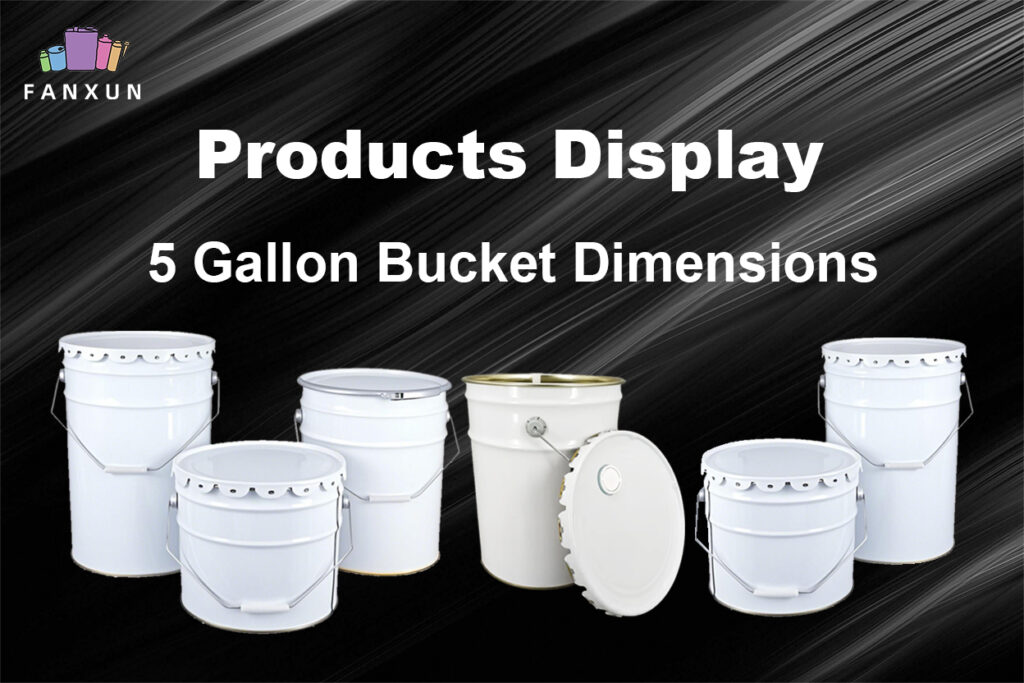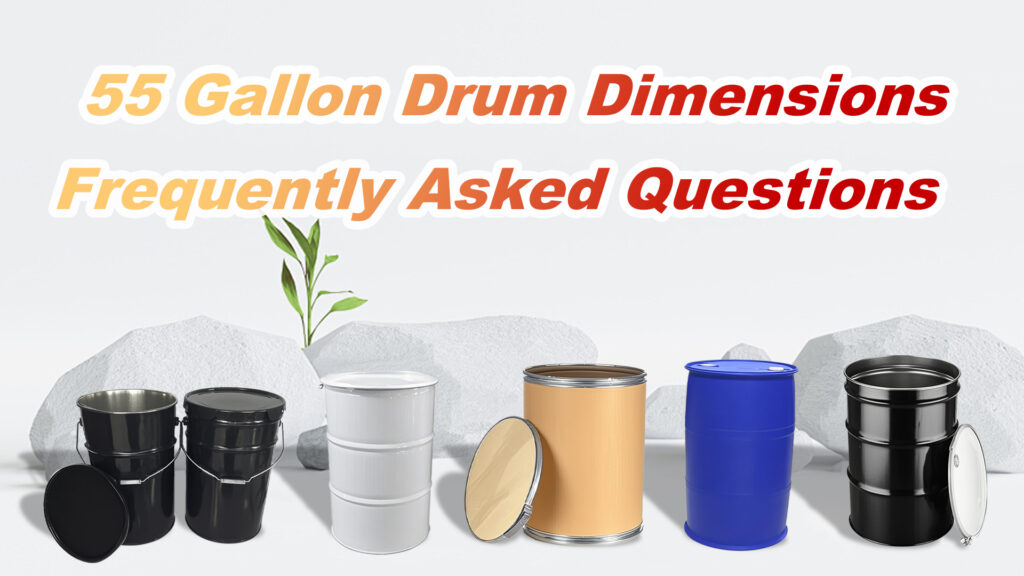That biting winter wind has arrived, and as you bundle up, a nagging thought might cross your mind: if it’s cold enough for me to see my breath, what’s happening to my car? Specifically, can my engine oil freeze? It’s a valid concern, especially when you rely on your vehicle to start reliably on those frosty mornings.
The short answer is a bit more nuanced than a simple yes or no. While your engine oil won’t freeze solid like a block of ice in your freezer, it can undergo significant changes in extremely cold temperatures that can severely impact your engine’s health and performance. This comprehensive guide will delve into everything you need to know about engine oil in cold weather, how to protect your engine, and what to do if you suspect a problem.
Understanding Engine Oil: More Than Just a Lubricant
Before we dive into the cold, let’s quickly recap what engine oil actually does. It’s the lifeblood of your engine, performing several critical functions:
- Lubrication: This is its primary role. Oil forms a protective film between moving engine parts, reducing friction and wear. Without it, metal-on-metal contact would quickly lead to catastrophic engine failure.
- Cooling: Oil helps to carry heat away from critical engine components, particularly in areas the coolant can’t reach effectively.
- Cleaning: Detergents and dispersants in modern oils help to keep the engine clean by suspending soot, dirt, and other byproducts of combustion, preventing them from forming sludge and deposits.
- シーリング: Oil helps to seal the tiny gaps between piston rings and cylinder walls, maintaining compression and efficiency.
- Corrosion Prevention: Additives in the oil protect metal surfaces from rust and corrosion.
Given these vital roles, anything that hinders the oil’s ability to flow freely can spell trouble for your engine.
What Really Happens to Engine Oil in Extreme Cold? It’s All About Viscosity
それで, does engine oil freeze? Not in the traditional sense. Unlike water, which has a distinct freezing point of 0∘c (32∘F) where it transitions from a liquid to a solid crystalline structure, engine oil behaves differently.
Engine oil is a complex blend of base oils and additives. As temperatures plummet, the oil doesn’t solidify into a block. Instead, it thickens significantly. This thickening process is often referred to as gelling or reaching its pour point.
- Pour Point: This is the lowest temperature at which an oil will still flow under specific test conditions. Below this temperature, the oil becomes so thick that it essentially refuses to pour.
- Gelling: As oil cools, the wax components naturally present in conventional (mineral-based) oils can begin to crystallize and interlock, forming a gel-like consistency. This dramatically increases the oil’s viscosity.
Think of it like honey in the refrigerator. It doesn’t freeze solid, but it becomes incredibly thick and difficult to pour. The same principle applies to your engine oil.
The Crucial Role of Viscosity
Viscosity is a measure of a fluid’s resistance to flow. It’s arguably the most important property of engine oil.
- Too Thin (Low Viscosity): If the oil is too thin, it won’t provide an adequate protective film between moving parts, leading to increased wear. This is typically a concern in very high operating temperatures.
- Too Thick (High Viscosity): If the oil is too thick, it won’t flow readily to critical engine components, especially during a cold start. This is our main concern in freezing weather.
Engine oils are graded using a system established by the Society of Automotive Engineers (SAE). You’ve likely seen codes like “5W-30” または “0W-20” on oil bottles. Let’s break down what these mean:
- The “W”: This stands for “Winter.”
- The Number Before the “W” (例えば。, 5W, 0W): This indicates the oil’s viscosity at low temperatures. The lower this number, the better the oil will flow in cold weather. A 0W oil will flow more easily at startup on a frigid morning than a 10W oil.
- The Number After the “W” (例えば。, 30, 20): This indicates the oil’s viscosity at normal engine operating temperatures (around 100∘c または 212∘F).
Key Takeaway: For cold weather performance, the “W” number is your primary focus.
The Dangers of “Frozen” or Gelled Engine Oil
When your engine oil becomes too thick due to extreme cold, several problems can arise, primarily during engine startup:
-
Starvation for Lubrication: This is the most significant danger. When you try to start your engine, the oil pump has to work much harder to draw the thick, molasses-like oil from the oil pan and circulate it throughout the engine. If the oil is too thick to flow properly:
- Delayed Lubrication: It takes longer for oil to reach critical components like the crankshaft bearings, camshaft, and valvetrain. During this brief period, these parts may operate with insufficient lubrication, leading to accelerated wear.
- No Lubrication (Worst Case): In extreme cases, the oil might be so thick that the pump can’t move it at all, or it cavitates (draws air). This means parts are running essentially dry, which can cause severe damage in a very short amount of time.
-
Increased Strain on the Starter Motor and Battery: Trying to crank an engine with overly thick oil is like trying to stir nearly-solid honey. It puts a tremendous strain on your starter motor and battery.
- The starter motor has to work much harder to turn the engine over, potentially leading to premature failure.
- The battery’s chemical reactions slow down in cold weather, reducing its available power. The increased demand from the starter motor can quickly drain an already weakened battery, leaving you stranded.
-
Reduced Fuel Efficiency: Even if the engine starts, thicker oil creates more internal friction, meaning the engine has to work harder. This can lead to a noticeable decrease in fuel economy, especially during short trips where the oil doesn’t have a chance to fully warm up and thin out.
-
Potential for Oil Filter Issues: Extremely thick oil can sometimes cause issues with the oil filter. The pressure relief valve in the filter might open if the oil is too viscous to pass through the filter media easily. While this prevents oil starvation, it means unfiltered oil is circulating through your engine, which isn’t ideal.
-
Long-Term Wear and Tear: Repeated cold starts with oil that is too thick will, 時間とともに, contribute to increased wear on engine components, potentially shortening the life of your engine.
Conventional vs. Synthetic Oils in the Cold: A Clear Winner
When it comes to cold weather performance, synthetic oils generally outperform conventional (mineral-based) oils by a significant margin.
Here’s why:
- Uniform Molecular Structure: Synthetic oils are engineered with more uniform molecule sizes. This means they flow much more easily at low temperatures and resist thickening better than conventional oils, which have a wider range of molecule sizes and naturally occurring waxes.
- Lower Pour Points: Synthetics typically have much lower pour points. This means they remain fluid and pumpable at significantly colder temperatures. For example, a conventional 5W-30 might start to gel around −25∘c に −30∘c (−13∘F に −22∘F), while a synthetic 5W-30 might remain fluid down to −40∘c (−40∘F) or even lower. A 0W synthetic will perform even better.
- Faster Lubrication on Startup: Because they flow better when cold, synthetic oils reach critical engine parts much faster during a cold start, providing quicker protection.
- Better Resistance to Breakdown: Synthetics are also more resistant to thermal breakdown at high temperatures and oxidation, meaning they generally last longer and provide better protection over their service life.
Table: Conventional vs. Synthetic Oil in Cold Weather
| 特徴 | Conventional Oil | Synthetic Oil |
|---|---|---|
| Low-Temp Flow | Tends to thicken more, higher pour point | Flows much better, lower pour point |
| Wax Content | Higher natural wax content can lead to gelling | Minimal to no wax content, resists gelling |
| Startup Lubrication | Slower to reach critical parts | Faster to reach critical parts, better initial protection |
| 料金 | Generally less expensive upfront | Generally more expensive upfront |
| Cold Weather Rating | 5W, 10W ratings common | 0W, 5W ratings common, offering superior cold flow |
| Overall Performance | Adequate for moderate climates, can struggle in extreme cold | Superior performance in extreme cold and varying temperatures |
While synthetic oils cost more per quart, the enhanced protection, especially in cold climates, can lead to longer engine life and potentially fewer costly repairs down the road. Many modern vehicles, especially those with turbocharged engines or those requiring extended oil change intervals, specifically recommend or require synthetic oil.
What Temperatures Should I Worry About?
There’s no single temperature at which all engine oil “freezes” or causes problems, as it depends heavily on:
- The type of oil: Conventional vs. Synthetic.
- The oil’s viscosity grade: Specifically the “W” rating.
- The specific formulation of the oil: Additives can influence cold-flow properties.
しかし, here are some general guidelines:
- その上 0∘c (32∘F): You’re generally fine with most oils, assuming they are the correct viscosity for your vehicle.
- 0∘c に −18∘c (32∘F に 0∘F): This is where the “W” rating becomes increasingly important. A 10W-xx oil might start to show signs of thickening, making starts a bit more sluggish. 5W-xx oils are better suited, and 0W-xx oils will provide the best flow. Conventional oils are more likely to be problematic at the lower end of this range.
- −18∘c に −30∘c (0∘F に −22∘F): In this range, using a high-quality synthetic oil with a low “W” rating (like 0W-xx or 5W-xx) is highly recommended, if not essential. Conventional oils, especially those with higher “W” numbers, are very likely to be too thick, leading to difficult starting and poor lubrication.
- Below −30∘c (Below −22∘F): Welcome to extreme cold! At these temperatures, only top-tier synthetic oils, particularly 0W grades, offer a fighting chance for your engine to start and receive adequate lubrication quickly. Even then, other measures like engine block heaters become crucial.
Always consult your vehicle’s owner’s manual. It will specify the recommended oil viscosity grades for different temperature ranges. Using the wrong oil can void your warranty.
How to Tell if Your Engine Oil is Too Cold or Gelled
It can be tricky to directly observe your oil’s condition without draining it, but here are some signs that your oil might be struggling in the cold:
- Slow, Labored Cranking: This is the most common symptom. If your engine turns over much more slowly than usual, as if the battery is weak (even if it’s not), thick oil is a likely culprit.
- Engine Fails to Start: In severe cases, the oil might be so thick that the starter motor simply can’t overcome the resistance to crank the engine fast enough, or at all.
- Knocking or Tapping Noises on Startup: If you hear unusual noises from the engine for the first few seconds after starting, it could indicate that oil isn’t reaching parts like the hydraulic lifters or camshaft quickly enough. These noises might subside as the oil warms and thins.
- Low Oil Pressure Warning Light (Less Common on Startup): While more common if oil levels are low, extremely thick oil could theoretically struggle to be picked up by the oil pump, potentially triggering a low oil pressure warning. しかし, the engine often won’t start at all if the oil is that thick.
- Checking the Dipstick (with caution): On a very cold morning before attempting to start the engine, you could (carefully and if you know what you’re doing) pull the dipstick.
- What to look for: Is the oil extremely thick and dark, almost like tar? Does it cling heavily to the dipstick and barely drip off, even when tilted? This suggests significant thickening.
- Caution: If the oil is truly gelled, it might be difficult to get an accurate reading or even pull the dipstick. Don’t force anything. If you’re unsure, it’s best to consult a mechanic.
Preventative Measures: Protecting Your Engine in the Cold
The best approach is to be proactive. Here’s how you can protect your engine from cold-weather oil problems:
-
Use the Right Oil Viscosity: This is paramount.
- Consult Your Owner’s Manual: This is your ultimate guide. It will provide a chart or recommendations for oil viscosity based on ambient temperatures.
- Opt for Lower “W” Numbers in Winter: If your manual gives a range (例えば。, 5W-30 or 10W-30), choose the 5W-30 for winter. If you live in a very cold climate, a 0W-xx synthetic oil is often the best choice, provided it’s approved for your vehicle.
-
Switch to Synthetic Oil: 説明したように, synthetic oils offer superior cold-flow properties. If you live in an area with harsh winters, making the switch can provide significant benefits and peace of mind. Even if you only switch for the winter months, it’s a worthwhile investment.
-
Regular Oil Changes: Fresh oil with its additive package intact will perform better in all conditions, including cold weather. Old, dirty oil can have depleted viscosity index improvers (additives that help oil maintain its viscosity across a range of temperatures) and may thicken more readily. Follow your vehicle manufacturer’s recommended oil change intervals.
-
Engine Block Heater: For those living in truly frigid climates (consistently below -20°C or -4°F), an engine block heater is a highly effective solution.
- How it works: This is an electric heating element installed directly into the engine block (often into a freeze plug opening) or sometimes externally attached. You plug it into a household electrical outlet for a few hours before you plan to start your car.
- 利点: It keeps the engine block and, consequently, the oil and coolant, warm. This means the oil flows easily on startup, the engine cranks over with less effort, the battery is less strained, and your heater will provide warm air much sooner.
-
Oil Pan Heater: Similar to a block heater, an oil pan heater is an electric heating pad that sticks to the underside of your oil pan. It directly warms the oil in the sump.
- 利点: Specifically targets the oil, ensuring it’s fluid and ready to be pumped. Generally easier and less expensive to install than a block heater.
- Consideration: May not warm the entire engine block as effectively as a block heater, but is very effective for improving oil flow.
-
Battery Care: A healthy battery is crucial for cold starts.
- Keep it Charged: Cold weather reduces battery capacity. If you make many short trips, your alternator might not fully recharge the battery. Consider using a battery tender or trickle charger if your car sits for extended periods in the cold.
- Ensure Terminals are Clean: Corroded battery terminals can impede current flow.
- Replace an Aging Battery: Batteries have a finite lifespan (typically 3-5 年). An old battery will struggle much more in the cold.
-
Allow a Brief Warm-Up (But Don’t Overdo It):
- Once the engine starts, let it idle for 30 seconds to a minute to allow oil pressure to build and the oil to begin circulating.
- Avoid prolonged idling: Modern engines don’t need extended warm-up times like older carbureted engines did. Driving gently for the first 5-10 minutes is the most effective way to warm up the entire drivetrain (engine, transmission, 等) and is better for fuel efficiency and emissions. Revving a cold engine high is detrimental.
What to Do if You Suspect Your Oil is “Frozen” or Gelled
If you turn the key and your engine cranks very slowly or not at all, and you suspect thick oil is the problem:
- DON’T Keep Cranking Excessively: You risk overheating the starter motor and completely draining your battery. If it doesn’t start after a couple of reasonable attempts, stop.
- Try to Warm the Oil (If Possible and Safe):
- Engine Block/Oil Pan Heater: If you have one, ensure it’s plugged in and give it sufficient time to work (a few hours usually).
- Warm Garage: If you can safely move the vehicle into a heated or warmer garage, allow several hours for the engine bay and oil to warm up. This is often the most effective solution.
- Portable Heater (Use with EXTREME CAUTION): Some people attempt to use a space heater or a hairdryer directed towards the oil pan. This carries a significant fire risk if not done with extreme caution and constant supervision. Keep the heater a safe distance from flammable materials, never leave it unattended, and ensure there are no fuel or oil leaks. This should be a last resort and done very carefully. Never use an open flame.
- Jump Start (If the Battery is Weakened): If the primary issue was the oil thickening and it has now strained the battery, a jump start from another vehicle 後 the oil has had a chance to warm up (if possible) might get you going.
- Check Oil Level and Condition (Once Warmer): If you manage to warm the oil or get the car to a warmer location, check the dipstick. If the oil appears exceptionally thick or milky (which could indicate coolant contamination, a separate serious issue), it’s best to have it inspected.
- Consider an Oil Change: If you’ve experienced a severe gelling incident, especially with conventional oil, it might be wise to change the oil and filter, opting for a good quality synthetic oil suitable for your climate.
- Consult a Mechanic: If you’re unable to start the vehicle or are concerned about potential damage, have your vehicle towed to a qualified mechanic. They can properly diagnose the issue and advise on any necessary repairs or maintenance.
よくある質問 (よくある質問)
Q1: Will using a thinner oil like 0W-20 in a car that recommends 5W-30 cause damage in summer?
あ: Always follow your owner’s manual. If 0W-20 is also listed as an acceptable grade for your engine, it’s generally fine. Synthetic 0W-20 oils are designed to perform well across a wide range of temperatures. しかし, if your manual のみ specifies 5W-30 and doesn’t list 0W-20 as an alternative, sticking to 5W-30 is the safest bet to ensure proper lubrication at higher operating temperatures. Using an oil that’s too thin for the designed operating temperatures can lead to increased wear.
Q2: How long does it take for engine oil to get too cold?
あ: This depends on the ambient temperature, how long the car has been sitting, wind chill (which cools the engine block faster), and the type/viscosity of the oil. It can happen overnight in very cold conditions. If temperatures are consistently well below freezing, the oil will likely be significantly affected after just a few hours of inactivity.
Q3: Does engine oil expire or go bad in the bottle if stored in a cold garage?
あ: Unopened engine oil, when stored properly in a sealed container and in a place without extreme temperature fluctuations, has a very long shelf life (often several years). While extreme cold won’t typically “ruin” unopened oil, repeated freeze-thaw cycles could potentially affect some additive packages over a very long time. It’s best to store oil in a place that doesn’t see wild temperature swings. Once opened, the oil is more susceptible to contamination and moisture.
Q4: Can I mix conventional and synthetic oil?
あ: はい, you generally can mix them (and synthetic blends are essentially this). しかし, if you mix conventional oil with synthetic oil, you will dilute the benefits of the full synthetic, particularly its superior cold-flow properties and resistance to breakdown. To get the full advantages, it’s best to use 100% synthetic oil if that’s your goal.
Q5: If my car struggles to start in the cold, is it always the oil?
あ: 必ずしもそうではありません. While thick oil is a common culprit, other issues can cause cold-start problems, including: * Weak battery: The most common issue. * Faulty starter motor. * Fuel problems: Frozen fuel lines (if there’s water in the fuel), or issues with fuel delivery. * Ignition system problems: Worn spark plugs, faulty ignition coils. * Glow plug issues (for diesel engines): Diesel engines rely on glow plugs to heat the combustion chamber for cold starts.
Q6: Is it true that you need to let your engine idle for 5-10 minutes to warm up in winter?
あ: This is largely a myth for modern fuel-injected engines. While a brief idle of 30 seconds to a minute allows oil to circulate, excessive idling wastes fuel, increases emissions, and isn’t the most efficient way to warm the engine. Gentle driving warms up the engine, transmission, and other components more effectively and quickly.
Aspects Users Should Consider
- Your Climate: The most critical factor. If you live in an area with mild winters, you have less to worry about. If you face Arctic blasts, proactive measures are essential.
- Your Vehicle’s Age and Type: Older vehicles or those with high mileage might be more sensitive to oil viscosity issues. Modern engines, especially turbocharged ones, often require specific (usually synthetic) oils.
- Driving Habits: Lots of short trips in the cold can be harder on your engine and battery, as the oil may not always reach its optimal operating temperature.
- Parking Location: Parking in a garage, even an unheated one, can keep your car several degrees warmer than parking outside, making a difference on cold mornings.
- Long-Term Costs vs. Upfront Savings: Synthetic oil and block heaters have an upfront cost, but they can prevent more expensive engine wear or starting issues down the line.
- Emergency Preparedness: In extremely cold regions, having an emergency kit in your car is always a good idea. This might include jumper cables, blankets, and a fully charged phone.
結論: Don’t Let the Cold Catch Your Engine Unprepared
While your engine oil won’t freeze into a solid block like water, its ability to flow can be severely compromised by cold temperatures. This “gelling” or thickening can lead to difficult starts, increased engine wear, そして, in extreme cases, prevent your car from starting at all.
By understanding the importance of oil viscosity, choosing the right type of oil (with synthetics offering superior cold-weather performance), and considering preventative measures like engine block heaters in frigid climates, you can ensure your engine gets the vital lubrication it needs, even on the coldest days. Always refer to your owner’s manual for manufacturer-specific recommendations. A little preparation can go a long way in protecting your engine and keeping you on the road all winter long.
When it comes to packaging for oils and other automotive fluids, quality and durability are key, especially when dealing with varying temperatures and storage conditions. ファンシュン is a world-class can manufacturer and supplier that can provide products in different specifications and shapes, ensuring your valuable fluids are stored securely and maintain their integrity. Their expertise in can manufacturing means they understand the importance of robust packaging solutions for diverse industrial and consumer needs.























